#*mardi gras INDIANS
Explore tagged Tumblr posts
Text

Mardi Gras Carnivaler, United States of America, by Charles Fréger
1K notes
·
View notes
Text
I’m an old school injun!
#black tumblr#black love#black indians#carnival season#mardi gras#black history#louisiana#black culture
253 notes
·
View notes
Text
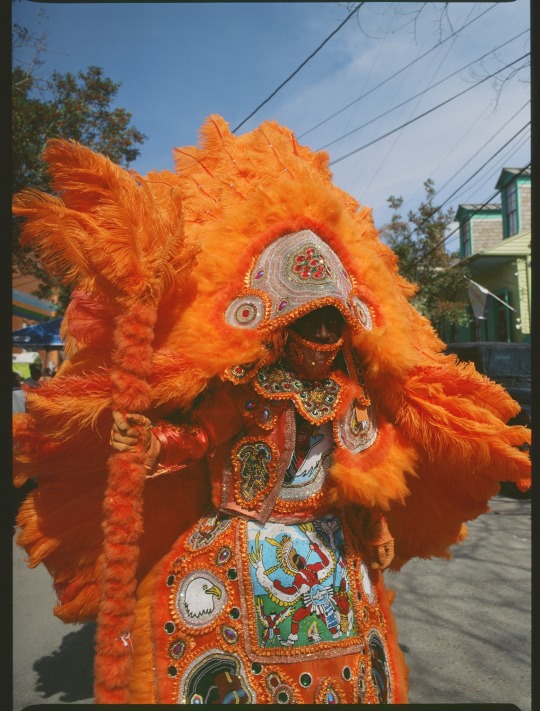
New Orleans, 2023
430 notes
·
View notes
Text





#mardi gras#mardi gras indians#mardi gras 2024#mardi gras traditions#black traditions#carnival culture#mmb#new orleans#alabama
23 notes
·
View notes
Video
youtube
Inside Black New Orleans' Most Sacred Ritual
21 notes
·
View notes
Text
#caribbean#caribbean culture#caribbean women#caribbean gyal#caribbean woman#caribbean men#caribbean man#st. vincent#st. Vincent Carnival#st. vincent carnival 2023#carnival#carnival 2023#vincy mas#mardi gras#west indies#west indian#island gyal#wine#dance#black#black women#beautiful#beautiful woman#beautiful women#mas#masqueraders#playing mas#black is beautiful#black woman#Spotify
31 notes
·
View notes
Text
"Mardi Gras Indians are secretive because only certain people participated in masking--people with questionable character. In the old day, the Indians were violent. Indians would meet on Mardi Gras; it was a day to settle scores." - Larry Bannock, Past President, New Orleans Mardi Gras Indian Council
Masking Indian Indians Ranks Super Sunday Keep-N-It-Real Indian Videos
Mardi Gras is full of secrets, and the Mardi Gras Indians are as much a part of that secrecy as any other carnival organization. Their parade dates, times and routes are never published in advance, although they do tend to gather in the same areas every year.
The Mardi Gras Indians are comprised, in large part, of the African-American communities of New Orleans's inner city. While these Indians have paraded for well over a century, their parade is perhaps the least recognized Mardi Gras tradition.
"Mardi Gras Indians--the parade most white people don't see. The ceremonial procession is loose, the parade is not scheduled for a particular time or route...that is up to the Big Chief." - Larry Bannock
Traditional Mardi Gras organizations form a "krewe." A krewe often names their parade after a particular Roman or Greek mythological hero or god. The ranking structure of a Mardi Gras Krewe is a parody of royalty: King, Queen, Dukes, Knights, and Captains, or some variation of that theme. Many of the more established krewes allow membership by invitation only.
Few in the ghetto felt they could ever participate in the typical New Orleans parade. Historically, slavery and racism were at the root of this cultural separation. The black neighborhoods in New Orleans gradually developed their own style of celebrating Mardi Gras. Their krewes are named for imaginary Indian tribes according to the streets of their ward or gang.
The Mardi Gras Indians named themselves after native Indians to pay them respect for their assistance in escaping the tyranny of slavery. It was often local Indians who accepted slaves into their society when they made a break for freedom. They have never forgotten this support.
Long ago, Mardi Gras was a violent day for many Mardi Gras Indians. It was a day often used to settle scores. The police were often unable to intervene due to the general confusion surrounding Mardi Gras events in the city, when the streets were crowded and everyone was masked. This kept many families away from the "parade," and created much worry and concern for a mother whose children wanted to join the Indians.
"'I'm gonna mask that morning if it costs me my life!' That morning you pray and ask God to watch over you, cause everybody is bucking for number one." - Larry Bannock
Today when two Mardi Gras Indian tribes pass one another, you will see a living theater of art and culture. Each tribe's style and dress is on display in a friendly but competitive manner. They compare one another's art and craftsmanship.
The Big Chiefs of two different tribes start with a song/chant, ceremonial dance, and threatening challenge to "Humba". The Big Chiefs demand that the other Chief bows and pays respect. The retort is a whoop and equally impressive song and war dance with the reply, "Me no Humba, YOU Humba!"
"You know when you've won, you see it in their eyes." - Larry Bannock
Although there was a history of violence, many now choose to keep this celebration friendly. Each Big Chief will eventually stand back and, with a theatrical display of self-confidence, acknowledge the artistry and craftsmanship of the other chief's suit.
Before the progression can continue, the two Big Chiefs will often comment privately to one another, "Looking good, baby, looking good!"
"After Mardi Gras, you thank GOD that you made it." - Larry Bannock
The good news is Mardi Gras day is no longer a day to "settle scores" among the Mardi Gras Indians. Now that the tradition and practice for the Indians to compare their tribal song, dance, and dress with other tribes as they meet that day, violence is a thing of the past.
The Mardi Gras Indian has invested thousands of hours and dollars in the creation of his suit, and will not run the risk of ruining it in a fight. This tradition, rich with folk art and history, is now appreciated by museums and historical societies around the world. It is a remarkable and welcome change from the past.
We hope you enjoyed reading about the Mardi Gras Indians as much as we have enjoyed bringing you the information about them. We thank the Mardi Gras Indian Council for opening their history books and sharing their history and traditions with us.
The History behind the masking of the Mardi Gras Indians is an extremely rich one. "If I had a heart attack at 92, I'd still mask. In New Orleans, you don't need a reason to do what you do, you do it because that's the way it is!" - Larry Bannock, President, New Orleans Mardi Gras Indian Council
When we first talked to Larry Bannock about the traditions of the Mardi Gras Indians, we didn't realize how fascinating it would be. We would like to thank Larry for opening up his world and his home to us as he shares this long-held but little-known Mardi Gras and St. Joseph Day tradition with us. Most importantly, we have learned a lot about character.
Mardi Gras Indian Masking means designing /creating a new costume each year. Larry Bannock wears a hand-beaded and feathered suit of original design that weighs between 100 and 150 pounds. He wears this suit as he marches throughout the city on Mardi Gras Day, meeting the other chiefs along the way (see history). At times, he removes the heavier part of the suit, replacing it as he approaches another Indian Chief.
"Downtown Indians use sequins, feathers; Uptown Indians use beads, rhinestones, feathers. The only time Downtown and Uptown Indians come together is to parade on St. Joseph's day." - Larry Bannock
There are distinct design differences between the costumes of the Downtown Indians and the Uptown Indians. When these tribes meet, each Indian is so proud of the costume he has created...and a silent comparison of their beauty takes place. To honor the Italians, the Indians again suit up and meet on the evening of St. Joseph's day in and around their neighborhoods. However, all of the Mardi Gras Indians come together to celebrate what they call "Super Sunday" with a parade. It is a beautiful sight and occurs during the day on a Sunday near St. Joseph's Day.
"Making an Indian suit comes from your heart; the Indian suit for next year is in my mind. You have to feel something about the patch. It has to mean something to you--the eagle, the buffalo--every patch I do is a spirit. You have to be on fire." - Larry Bannock
Making a new suit is time-consuming and must be planned carefully. An Indian's costume may take up to a year to complete, starting with the conception of an idea for next year's suit. Ordering material, designing layout, sewing and beadwork follow. Larry, an uptown Indian Chief and President of the Mardi Gras Indian Council, had the design picked out for his '97 suit before Mardi Gras of '96.
After an artist friend draws the image upon the canvas, Larry decides upon the colored beads he will use to create a patch for his costume. The beadwork is done entirely by hand...and he does all of it himself. This bead art and the plumage selected each year make a glorious combination of color and texture that render his costumes such extraordinary works of art that some are now on display in museums throughout the country.
"Masking as a Mardi Gras Indian...it's dying, because it costs...over $1,000 for rhinestones, $320.00 for velvet, hundreds for beads, hundreds more for the feathers...it costs, yeah. People with families to support find it difficult." - Larry Bannock
One of the reasons there is so much interest in the Mardi Gras Indians is because it seems to be a dying tradition. When the costumes were made from whatever material could be found, there were many Indians. However, the designs of the costumes have become so elaborate that it is very difficult for many to afford the expense. Larry is able to afford to make his costume due to the generosity of some of his friends who contribute their skills and hard work. He is also asked to speak to others around the country about the rich history of the Mardi Gras Indian, and whatever he makes helps finance his next year's costume. However, it is often a struggle.
"Rex has designers; its King has no say on his costume. My suit is ME! I do the patchwork and rhinestones. I have people helping me hook up now, but there's only two patches I didn't do: a rattlesnake and a hatchet-- given to me by two older Indians. I'll always wear those patches." - Larry Bannock
Typical of Mardi Gras tradition, rarely will anyone outside of the immediate family and close friends have an opportunity to witness a suit's creation before Mardi Gras. National Geographic and 48 Hours, however, were lucky enough to go behind the scenes while doing a special on this tradition. The television crews even pitched in during the last hectic days before Mardi Gras.
It is all worthwhile for Larry when he steps out of his home, on Mardi Gras morning, into his waiting neighborhood in all of his glory.
His Mardi Gras Indian costume often surpasses the quality, intricacy and artistry seen in the costumes of many Mardi Gras Kings and Queens. Seeing the Indians in their suits marching, singing and dancing is to watch art come alive.
"The Spy Boy is first in the front: he is the baddest of all the Indians… he is ahead looking for trouble. Only a chosen few can be Spy Boy. It's his job to send a signal to First Flag when he sees other Indians. First Flag signals back down the line to Big Chief. Big Chief has a stick that controls the Indians. When he hits the ground with the stick, they better get down and bow to the Chief." - Larry Bannock
On Mardi Gras Day, if you're lucky enough to see some of the Mardi Gras Indians, the first Indian you're likely to see is the Spy Boy. His job places him ahead of the Big Chief's procession. Each Spy Boy has a method to signal potential trouble or approaching rival Indian tribes… with dancing, whooping, hollering, and hand language. His observations are communicated to the Big Chief who, in return, sends a set of directions and instructions back down the parade procession.
"I 'took' my position as a Spy Boy. Nobody gave it to me. I took it when someone else didn't do their job. Your heart and soul has to be there." - Larry Bannock
It is through this elaborate system of dances, whoops, flags and hand signals that the Big Chief is able to direct a progression multiple streets long… even though he is far away from the front of the parade. This communication network is important, as it allows the Big Chief time to adjust his suit, don his headdress, and prepare a song for an impending meeting with a rival tribe. Marching the streets on Mardi Gras Day on the way to meet other Indian tribes is a tribe's opportunity to have an entire year's worth of artistic effort appraised by an opponent artist.
"The route on Mardi Gras is always secret. Nobody knows where anybody's gonna be… that's why Spy Boy is ahead and looking for Indians. If he sights a gang, he tells Flag Boy that a gang is on its way." - Larry Bannock
The Flag Boy is the next ranking Indian. It is he who carries the "gang flag" – a huge staff decorated with feathers (seen on left) and the gang symbol. Generally Flag Boys are a block or two behind Spy Boys, and at least a block ahead of the Big Chief. Their responsibility is to pass along Spy Boy's information to the Big Chief, and return the Big Chief's response back to the Spy Boy. By raising his gang flag high in the air and using prearranged signals, the Flag Boy is able to keep the Big Chief and Spy Boy in direct communication. This allows the Big Chief control over the direction of the route his tribe will take. As mentioned, the progression can be many streets long. "Second Liners" are always present between the ranking Indians. They are usually not costumed, but provide much entertainment as they follow along dancing, singing, beating drums and playing tambourines.
Enjoy rarely seen videos of the New Orleans Mardi Gras Indians on Super Sunday (St. Joseph's Day).
Enjoy some of our favorite video clips from Mardi Gras. You can also watch video footage from years past, including celebrity interviews and the Zulu parade, from the Mardi Gras Inside and Out Video Series. For more videos, visit our YouTube Channel.
Mardi Gras Indians New Orleans Louisiana
Mardi Gras Indians New Orleans Louisiana
Mardi Gras Indians New Orleans Louisiana
Mardi Gras Indians New Orleans Louisiana
Mardi Gras Indians
Mardi Gras Indians New Orleans Louisiana
#Mardi Gras#Mardi Gras Indians#Mardi Gras History#New Orleans#Mardi Gras Indian Council#Black Indians
8 notes
·
View notes
Text





Super Sunday film adventure
#new orleans#35mm#film#film photography#35mm film photography#film is not dead#mardi gras indians#black masking Indians#pretty pretty
27 notes
·
View notes
Text

3 notes
·
View notes
Text
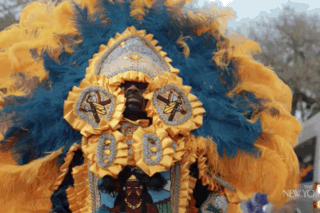


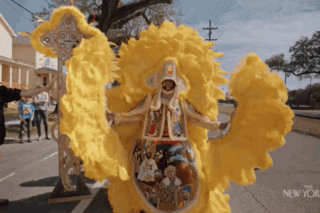


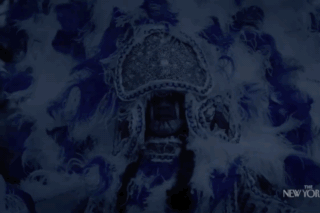
All on a Mardi Gras Day
#Mardi Gras Indians#Mardi Gras#Fat Tuesday#New Orleans#Black American#Black American culture#Black American tradition#Black American ritual#Black Americans#Black Native Americans
31 notes
·
View notes
Text
50 Years, 50 Albums (1976): The Wild Tchoupitoulas
I will turn 50 in November of this year, so my project for 2023 will be to listen to and review one album from each year of my life, 1973 to 2022. The only qualification is that it has to be an album I’ve not reviewed previously. 1976 Top Grossing Albums of 1976: Hotel California – Eagles Songs in the Key of Life – Stevie Wonder Frampton Comes Alive – Peter Frampton Wings at the Speed of…
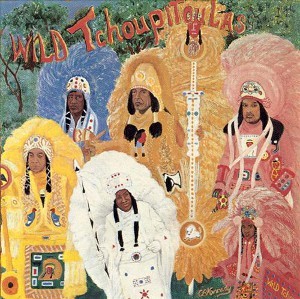
View On WordPress
#50 Years 50 Albums#Album Reviews#Mardi Gras#Mardi Gras Indians Music#Music#New Orleans#The Wild Tchoupitoulas#Traditional Music
5 notes
·
View notes
Photo










19 notes
·
View notes
Text
Who doesn't love #MardiGras? Learn more about it before 2.13.24! #Booksgiving idea for your "ya'at" friend.
MARDI GRAS INDIANS, a fascinating introduction to a culture too few know about, via @lsupress.
#book review#booksgiving#book blog#book tumblr#lsu press#mardi gras#mardi gras indians#afro indigenous
3 notes
·
View notes
Text
youtube
Hey Hey (Indians Comin) - The Wild Tchoupitoulas
3 notes
·
View notes
Text
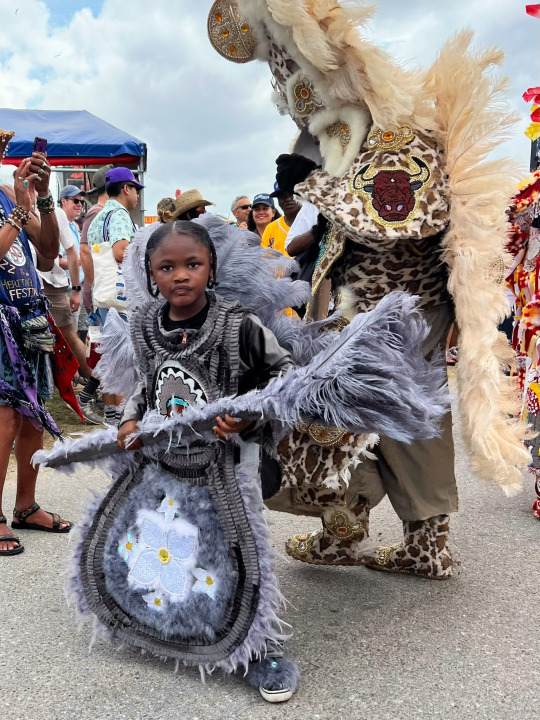
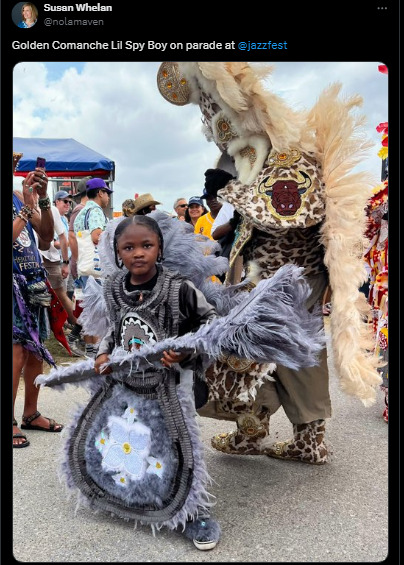
#new orleans jazz fest#nola#jazz fest 2024#mardi gras indians#black culture#golden comanche lil spy boy#mmb#carnival culture
5 notes
·
View notes
Text
Watch "Inside Black New Orleans' Most Sacred Ritual" on YouTube
youtube
#new orleans#black community#culture#geography#us history#mardi gras#masking indian#sociology#ritual#Youtube
5 notes
·
View notes